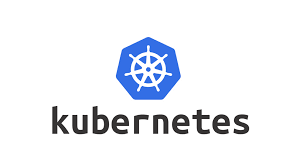Kubernetes
All you need to know about Kubernetes


Kubernetes: The Future of Container Orchestration
Introduction
In the ever-evolving world of cloud computing and DevOps, Kubernetes has emerged as the de facto standard for container orchestration. Originally developed by Google and now maintained by the Cloud Native Computing Foundation (CNCF), Kubernetes simplifies the deployment, scaling, and management of containerized applications. Businesses leveraging Kubernetes benefit from increased automation, flexibility, and scalability, making it an essential tool for modern application development.
What is Kubernetes?
Kubernetes, often abbreviated as K8s, is an open-source container orchestration platform that automates the deployment, scaling, and operation of application containers. It eliminates the complexity of managing containers manually, providing a robust framework for containerized application lifecycle management. Kubernetes ensures high availability, fault tolerance, and efficient resource utilization, making it ideal for running applications in cloud-native environments.
Key Features of Kubernetes
Kubernetes offers several powerful features that make it indispensable for DevOps and cloud-native development. It enables automated scaling, ensuring applications dynamically scale based on demand. Kubernetes also supports self-healing, which means if a container crashes, it automatically restarts, maintaining high availability. It provides load balancing and service discovery, efficiently distributing traffic across multiple instances to enhance performance and reliability. With declarative configuration, users can define infrastructure and application states using YAML or JSON manifest files, ensuring consistent deployments. Kubernetes also supports storage orchestration, integrating seamlessly with various storage solutions such as AWS EBS, Azure Disks, and on-premises storage. Furthermore, Kubernetes offers multi-cloud and hybrid cloud support, making it a flexible choice for organizations deploying workloads across multiple cloud providers.
Kubernetes Architecture
Kubernetes follows a master-worker architecture, where various components work together to manage containerized applications efficiently. The Control Plane includes essential components like the API server, scheduler, controller manager, and etcd, which maintain the cluster state and ensure smooth operations. The Worker Nodes run Kubernetes agents such as Kubelet, a Container Runtime (Docker or containerd), and Kube Proxy, which handle networking and execution of application pods. At the core of Kubernetes, Pods serve as the smallest deployable unit, containing one or more containers that share storage and networking resources.
Kubernetes Deployment Strategies
Kubernetes supports multiple deployment strategies to cater to different business requirements. Rolling updates allow incremental updates to pods, minimizing downtime and service disruptions. Blue-green deployments maintain two environments (blue and green), enabling seamless rollbacks in case of failures. Canary deployments introduce new application versions to a subset of users before a full rollout, reducing risks. Additionally, A/B testing facilitates testing different application versions with segmented users to analyze performance and user experience.
Benefits of Using Kubernetes
Kubernetes provides numerous advantages that make it a game-changer in modern cloud infrastructure. Enhanced scalability ensures applications scale up or down automatically based on load, optimizing resource usage. Cost optimization reduces infrastructure expenses by efficiently allocating resources. Faster deployments accelerate software delivery cycles through automated CI/CD workflows. High availability guarantees uptime by leveraging self-healing and fault-tolerant mechanisms. Lastly, improved security is achieved through role-based access control (RBAC) and network policies, safeguarding applications from vulnerabilities.
Popular Kubernetes Tools and Integrations
Several tools enhance Kubernetes functionality, making application management seamless. Helm is a package manager that simplifies Kubernetes application deployments. Prometheus and Grafana provide real-time monitoring and visualization of cluster health. Istio and Linkerd serve as service mesh solutions, enabling advanced traffic management and security. Kubectl is a command-line tool for managing Kubernetes clusters efficiently. Terraform and Ansible facilitate infrastructure automation, streamlining Kubernetes deployments.
Conclusion
Kubernetes has revolutionized the way applications are deployed and managed in cloud-native environments. By automating container orchestration, it enhances scalability, reliability, and operational efficiency. Whether you're a DevOps engineer, software developer, or IT administrator, mastering Kubernetes can significantly improve your ability to build and manage modern applications. As organizations continue to adopt Kubernetes, it remains at the forefront of digital transformation, empowering businesses to innovate faster and more efficiently.


